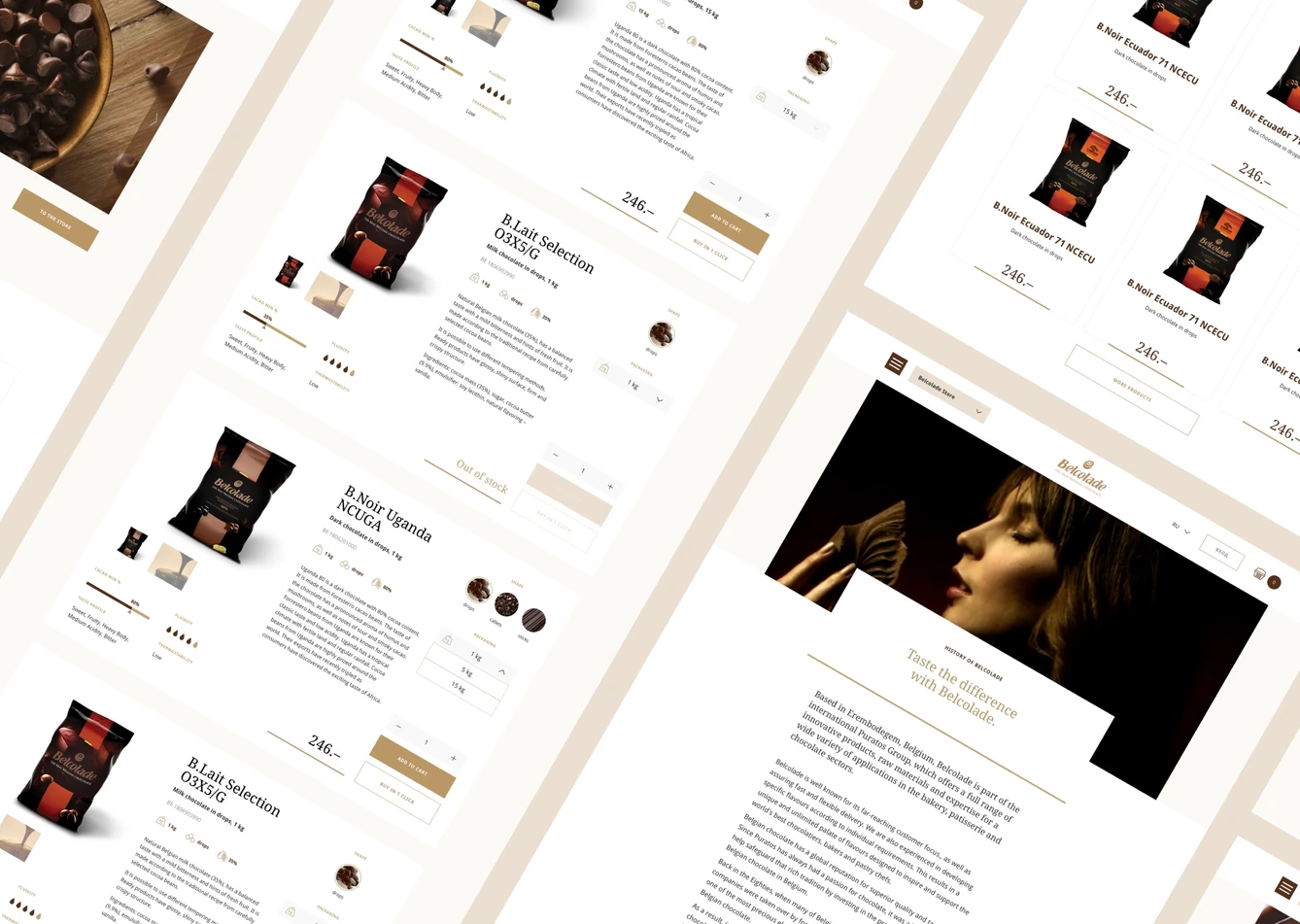Client
Puratos Group
Industry
Manufacturing (Food)
Belcolade’s 2-Sided marketplace: Bridging customers, artisans, and a premium chocolate supplier
What business problem was solved with this product?
Traditionally, Belcolade operated within a B2B model, selling premium industrial chocolate exclusively to large-scale wholesale buyers. This restricted access for smaller businesses and individual enthusiasts eager to use high-quality chocolate for small commercial ventures and home baking.
The challenge was to expand Belcolade’s market reach by incorporating direct sales channels, making premium chocolate accessible to smaller buyers, while seamlessly integrating B2C and B2B2C transactions into a unified digital platform we built from scratch.
Who is who
Challenge
This digital product was supposed to allow the company to start B2C and B2B2C sales and enabled end customers, such as home baking enthusiasts, small pastry shops, and amateur chocolatiers, to access Belcolade's high-quality products for the first time. Our objective was to unify all the audiences served by a single digital product: small buyers had the opportunity to purchase products directly from Belcolade, while their customers could buy chocolate-based products from them.

Scope
Discovery Workshop
Competitive Analysis
End-user Interviews, CX calls
Stakeholders Interviews
User Stories
Information Architecture
User Flows
Prototyping
Iterations
Design System
Visual Design
Design QA
Approach
To address the unique needs of both buyers and suppliers, we structured the e-commerce platform as a fully integrated two-sided marketplace that streamlined interactions between professional chocolatiers and Belcolade’s supplier network. In doing so, we also repositioned the digital product as a community magnet – bringing together professionals, retailers, artisans, and of course, end customers.

I proposed integrating both buying and selling audiences into a single digital product. Simply put: users would start with a typical e-commerce experience – browsing and purchasing premium chocolate. But since we were targeting artisans and passionate home bakers, we gave them the option to apply to become sellers. Once approved, their account seamlessly transformed – they could now manage not only their purchases but also track their own product listings and sales, all within the same platform.
Me and my team took a strategic, user-centric approach, starting with in-depth research into the needs of professional chocolate buyers. We spoke directly with café owners and leading professionals running their businesses on Instagram. By analyzing both user demands and business goals, we identified key features and friction points in the customer journey, and developed a solution that combined elegance with efficiency.
We established a design system and content bank that included various components and assets – including photography, and a custom icon set to visually represent complex product attributes such as cocoa origin, processing methods, and sustainability certifications.
Impact
For Buyers (chocolatiers, confectioners, and manufacturers): We designed an intuitive product catalog with interactive filtering, allowing users to easily compare chocolate varieties based on origin, taste profile, cocoa content, and sustainability certifications.
For Suppliers: We created a robust backend system that allowed suppliers to manage inventory, update product information, and communicate directly with buyers. This self-service model empowered suppliers while keeping information up-to-date.
For client: The digital platform successfully transformed Belcolade’s market and online presence, aligning it with the brand’s premium positioning while making it more functional for B2C clients.
Belcolade’s marketing and sales teams benefited from a more structured and intuitive platform, making it easier to communicate product value to clients. The improved navigation and product visualization tools resulted in higher engagement, reduced friction in product selection, and a more seamless transition from exploration to purchase.
Design-wise, reusable UI components and a modular design system ensured consistency and scalability.





